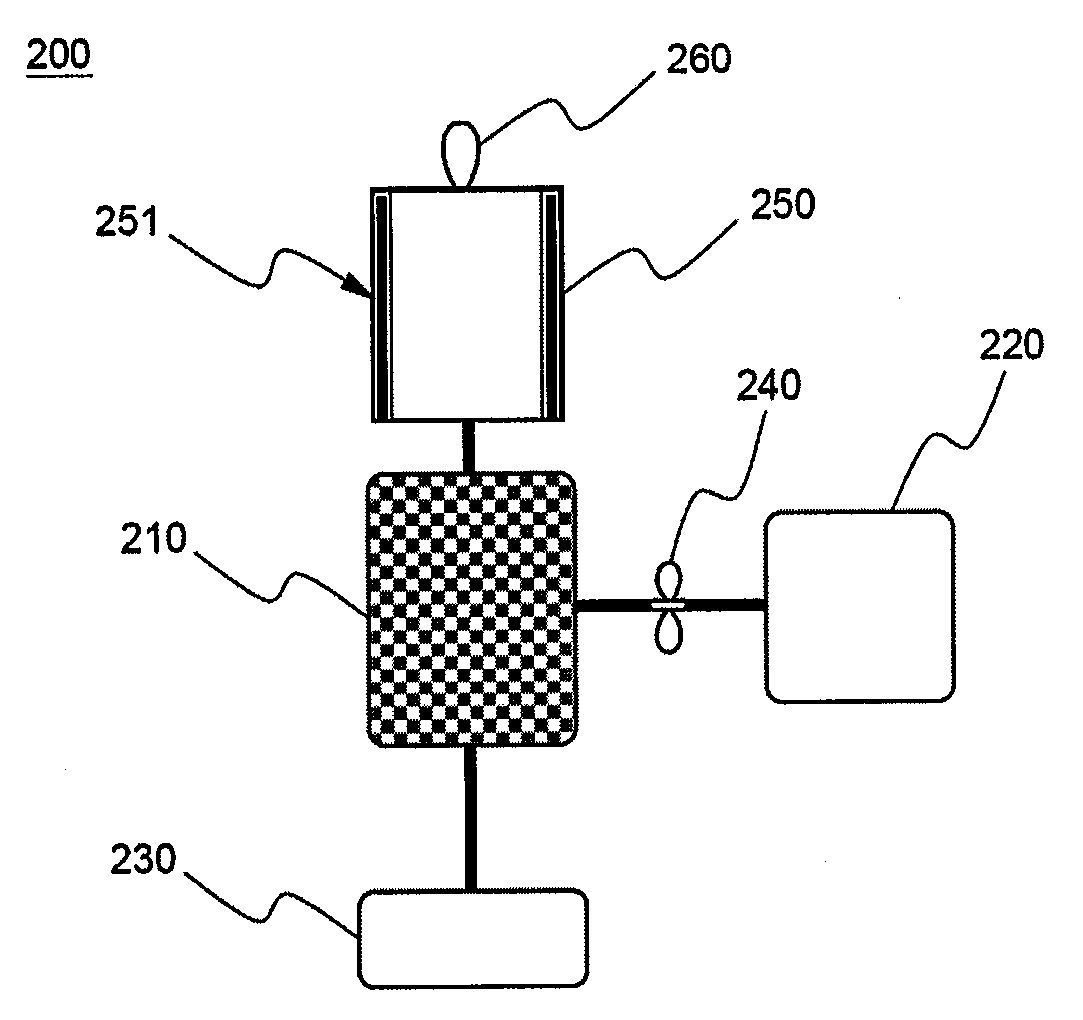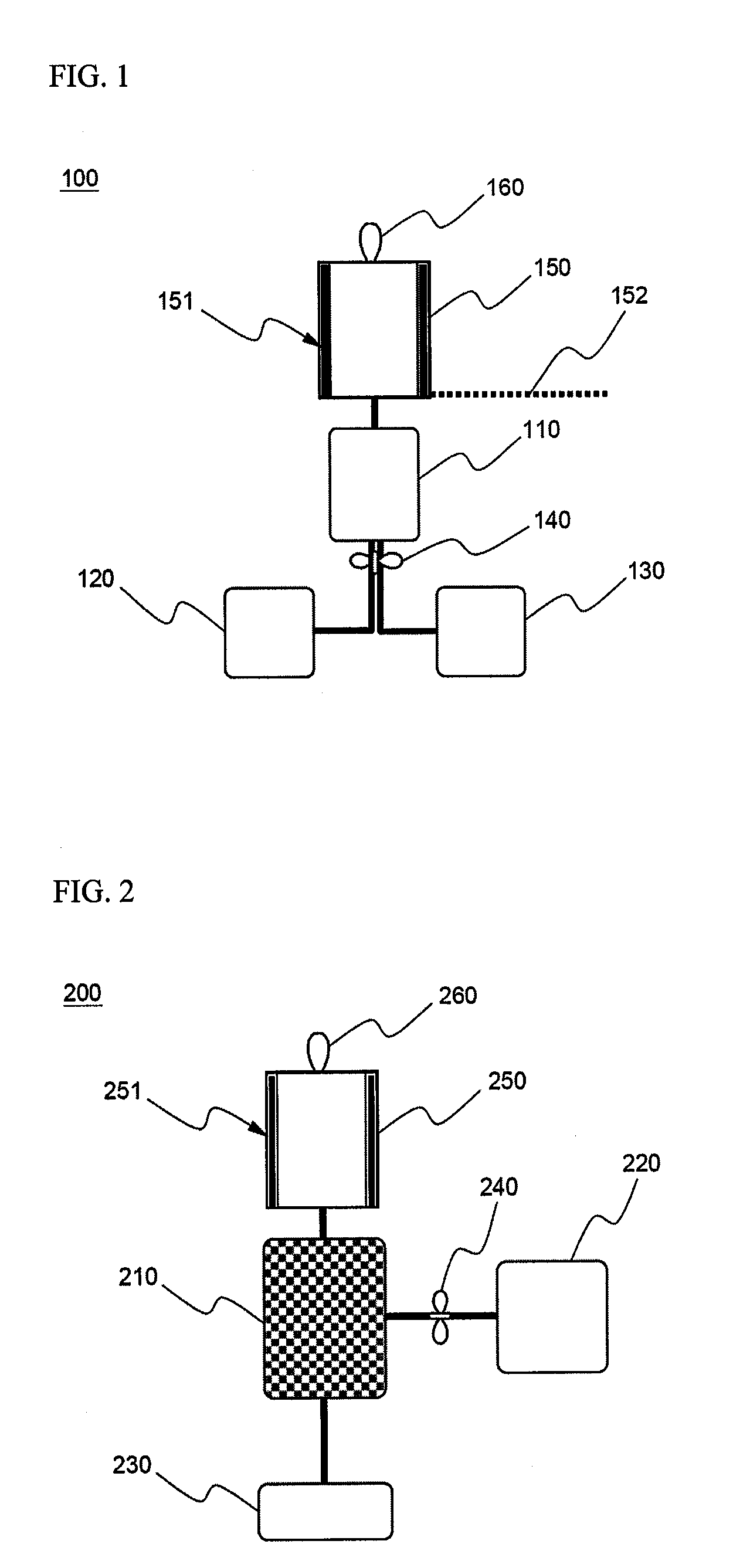Cyclopropenes-Generating Devices to Control Ripenning Processes of Agricultural Products
a technology of cyclopropene and ripenning process, which is applied in the direction of liquid-gas reaction of thin-film type, physical/chemical process catalyst, gas-gas reaction process, etc., can solve the problems of easy loss of chemical properties, long processing time and know-how for such treatment, and easy spraying of cyclopropene derivatives. , the effect of facilitating the migration of cyclopropene derivatives
- Summary
- Abstract
- Description
- Claims
- Application Information
AI Technical Summary
Benefits of technology
Problems solved by technology
Method used
Image
Examples
example 1
Synthesis of 1-methylcyclopropene from methallyl chloride
[0076]1.8 g of methallyl chloride was dissolved in 3 mL of anhydrous decane, and anhydrous decane was additionally added to make a 5 mL volume of the resulting solution which was then placed in Container I. 20 mL of a solution of 2.0 M phenyllithium in cyclohexane was placed in Container II. An injection valve was set such that the solution of Container I was discharged at a rate of 0.1 mL / min into Container II, under ambient temperature conditions. And then, in order to promote the discharge of 1-methylcyclopropene gas generated from Container II, an air flow was maintained at a flow rate of 100 mL / min by installing a small compressor at one end of Container II. At this time, the gas discharged via a nozzle was collected and subjected to molecular weight analysis using GC / MS. As a result, it was confirmed that the detected gas was 1-methylcyclopropene and an isomer thereof (MW: 54).
example 2
Synthesis of 1-methylcyclopropene from 1-methyl-1,2,2-tribromocyclopropane
[0077]2.95 g of 1-methyl-1,2,2-tribromocyclopropane, obtained from reaction of 2-bromopropene and bromoform, was dissolved in 5 mL of anhydrous decane, and anhydrous decane was additionally added to make a 10 mL volume of the resulting solution which was then placed in Container I. 20 mL of a solution of 2.0 M butyllithium in decane was placed in Container II. An injection valve was set such that under ambient temperature conditions, the solutions of Container I and Container II were discharged at a rate of 0.1 mL / min and 0.2 mL / min into another reaction vessel, Container III, respectively. The thus-discharged solutions were homogeneously mixed in Container III, and upon reaching more than 2 mL of the reaction solution volume, were allowed to be spontaneously overflowed and slowly dropped in a water bucket containing 10 mL of water. And then, in order to promote the discharge of 1-methylcyclopropene gas genera...
example 3
Synthesis of Cyclopropene from Bromocyclopropane
[0078]1.5 g of bromocyclopropane was placed in Container I, and 20 mL of 15% potassium t-butoxide t-butanol solution was placed in Container II. Thereafter, the solution of Container I was slowly released at a rate of 1.0 mL / min into Container II. And then, in order to promote the discharge of cyclopropene gas generated from Container II, an air flow was maintained at a flow rate of 100 mL / min by installing a small compressor at one end of Container II. At this time, the gas discharged via a nozzle of Container II was collected and subjected to molecular weight analysis using GC / MS. As a result, it was confirmed that the analyzed gas was composed of cyclopropene and an isomer thereof (MW: 40).
PUM
| Property | Measurement | Unit |
|---|---|---|
| temperature | aaaaa | aaaaa |
| volume | aaaaa | aaaaa |
| volume | aaaaa | aaaaa |
Abstract
Description
Claims
Application Information
 Login to View More
Login to View More - R&D
- Intellectual Property
- Life Sciences
- Materials
- Tech Scout
- Unparalleled Data Quality
- Higher Quality Content
- 60% Fewer Hallucinations
Browse by: Latest US Patents, China's latest patents, Technical Efficacy Thesaurus, Application Domain, Technology Topic, Popular Technical Reports.
© 2025 PatSnap. All rights reserved.Legal|Privacy policy|Modern Slavery Act Transparency Statement|Sitemap|About US| Contact US: help@patsnap.com



